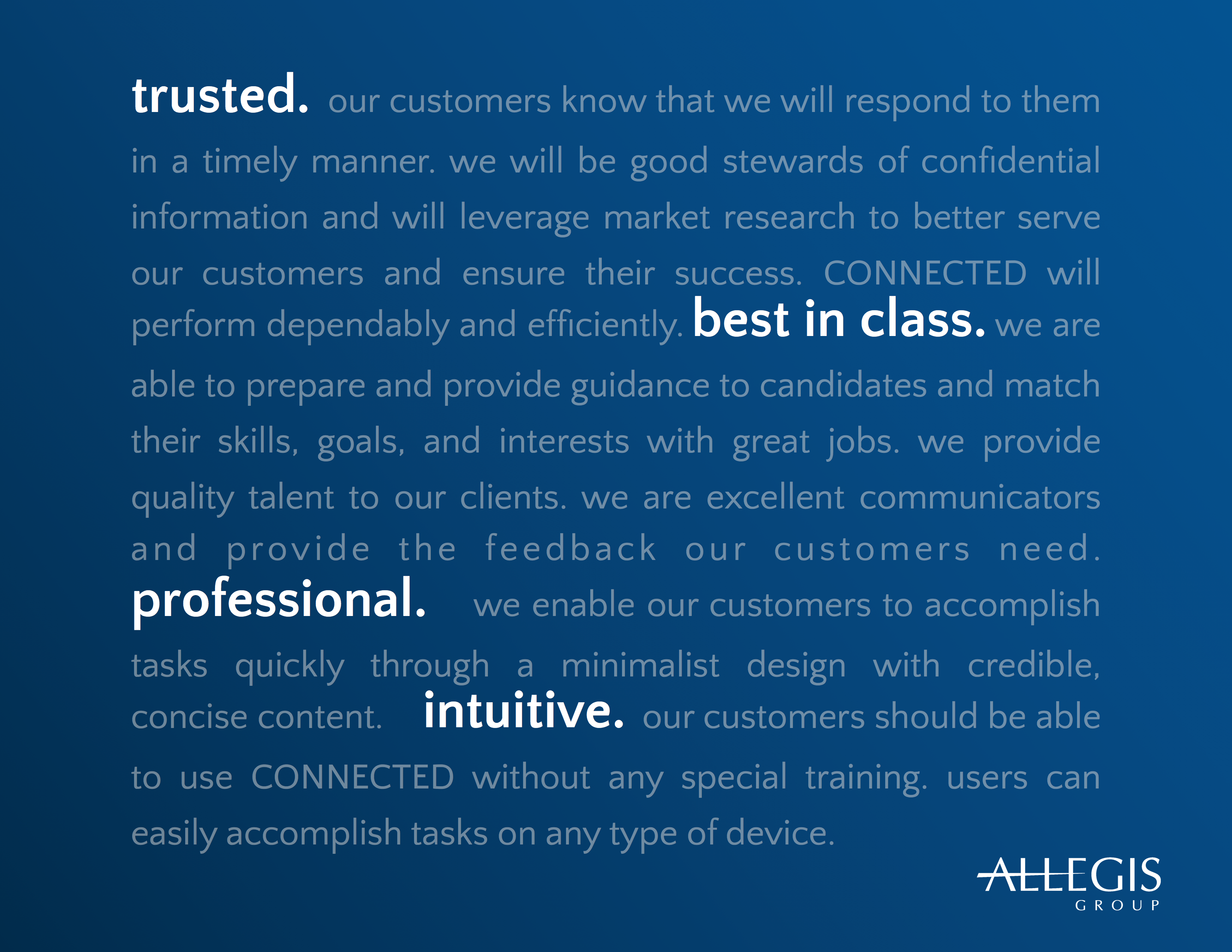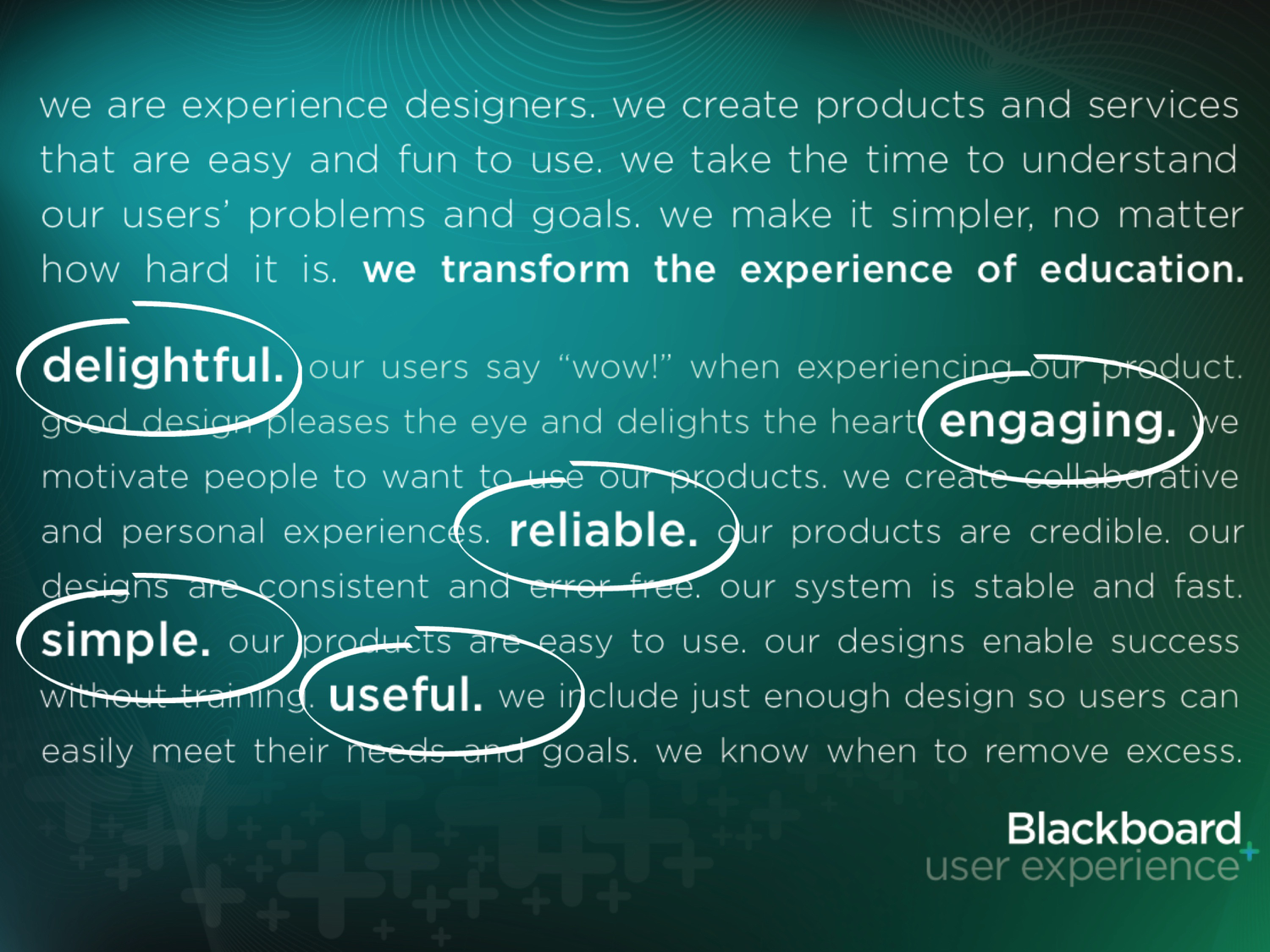Design principles help design teams tactically apply a company's mission to its solutions. Design principles help teams define the brand. Design principles describe how you want to be perceived by your audience. Fundamentally, the process and output focus teams on translating what to build by addressing user experience goals.
Early in my time working at Blackboard, our user experience team was small, comprised of designers, engineers, researchers, and technical writers. Over time our team, and the product division overall, grew. Growth is a good thing, but one casualty is that workers sometimes lost sight of their users' needs and goals. The company mission just didn't translate into actionable information to inform design and development decisions.
So I decided to design an activity that would help local teams not just create features that met requirements, but rather, to create features that mapped to a "true north" - brand characteristics that could help inform our design decisions. I started by leveraging the Microsoft Desirability Toolkit, adapting the original activity's purpose by asking members of product teams to answer,
How do you want Blackboard's products to be perceived by its users?
I created a card sort activity using the positive word adjectives, and asked individuals to group these words and then name each grouping. Ultimately we came up with 5 words that exemplified how we wanted our products to be perceived by our customers: reliable, useful, delightful, engaging, and simple.

I did a similar activity while working for Allegis Group. Software development was not the primary focus for this organization, so as they built up new capabilities, it was critical to align stakeholders so that they shared a similar vision for the products we were to deliver. Instead of conducting the same activity with product teams, I instead met with each of the marketing directors, conducting a branding card activity with them. Here the focus question was the same.

In each example, the resulting principles became a rally cry for teams. It became commonplace to hear teams meet and say, "this feature will not delight our customer" or "this feature is not intuitive enough." We also asked customers to provide feedback against these principles, so we could determine how well our features aligned to these goals.